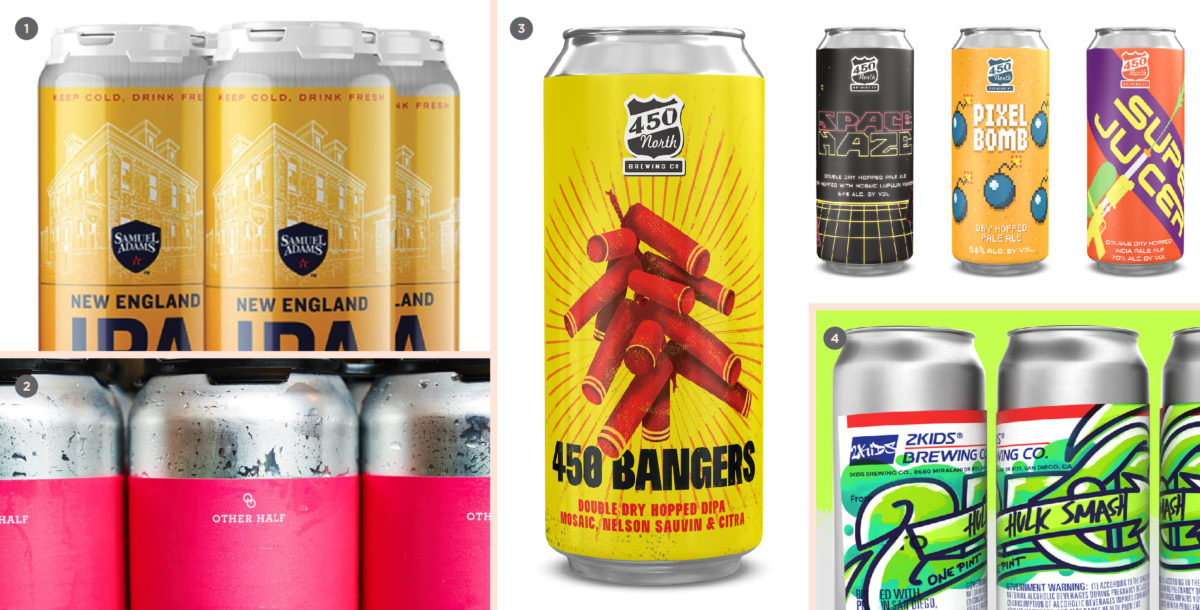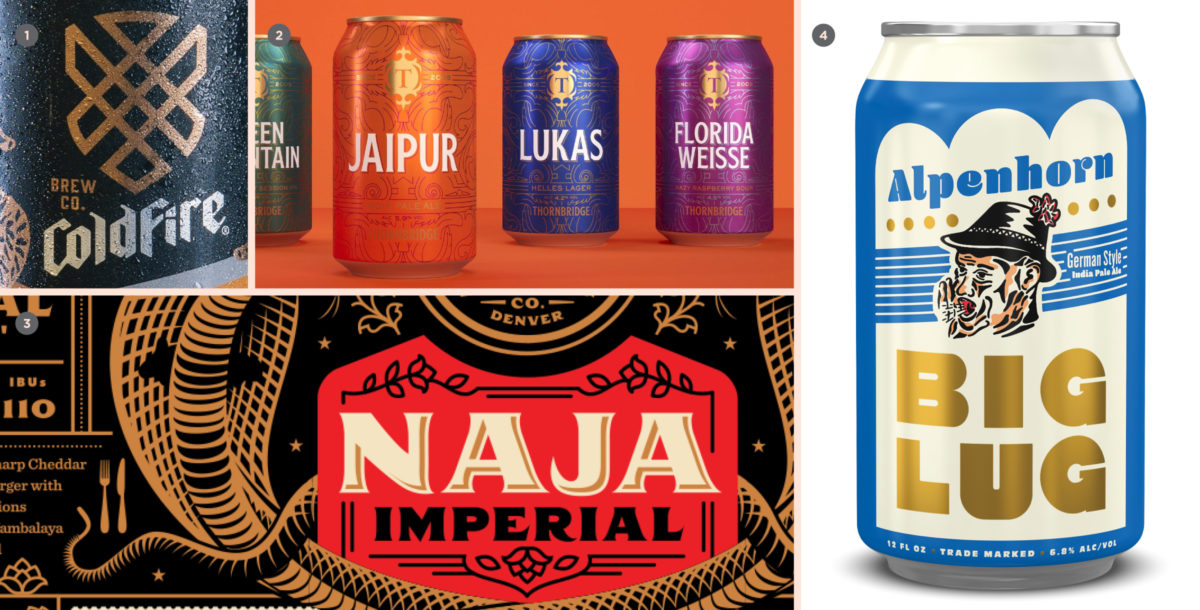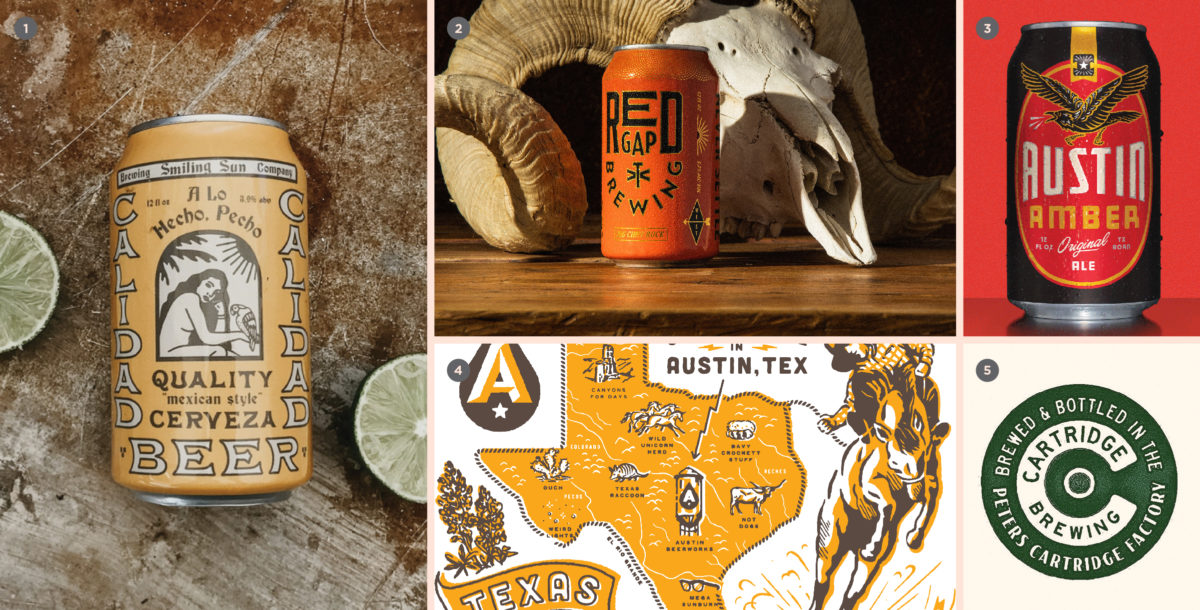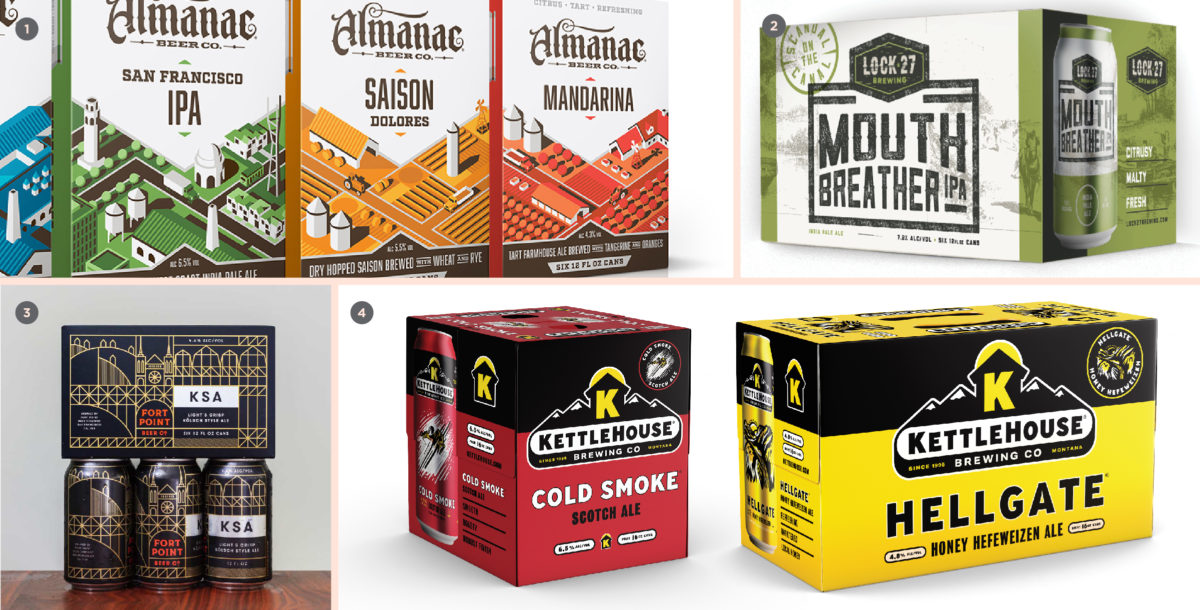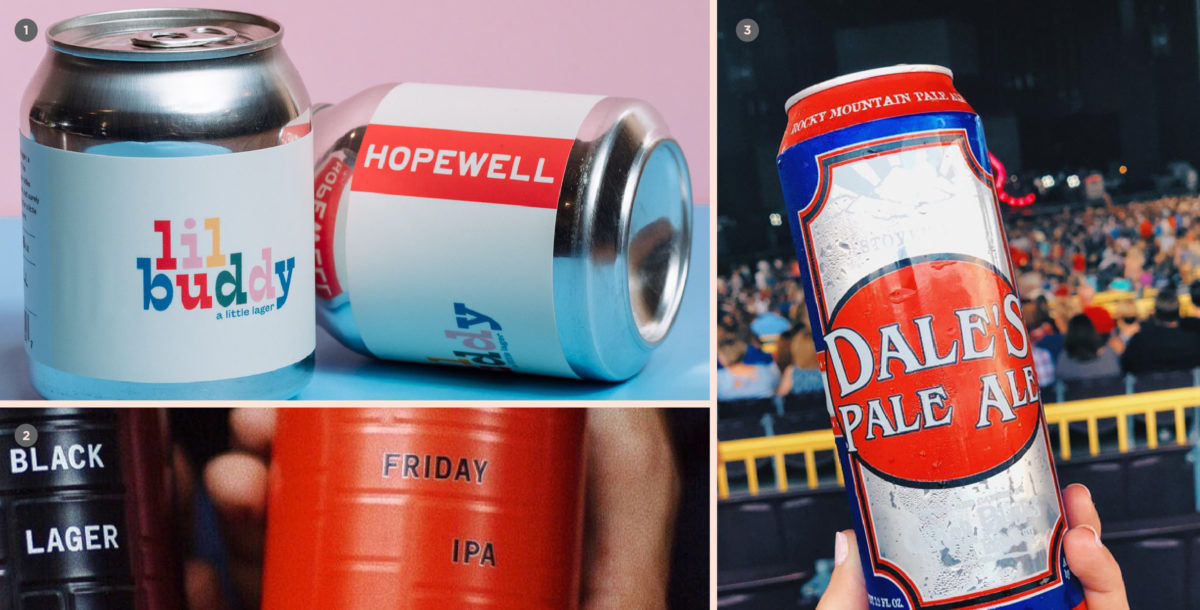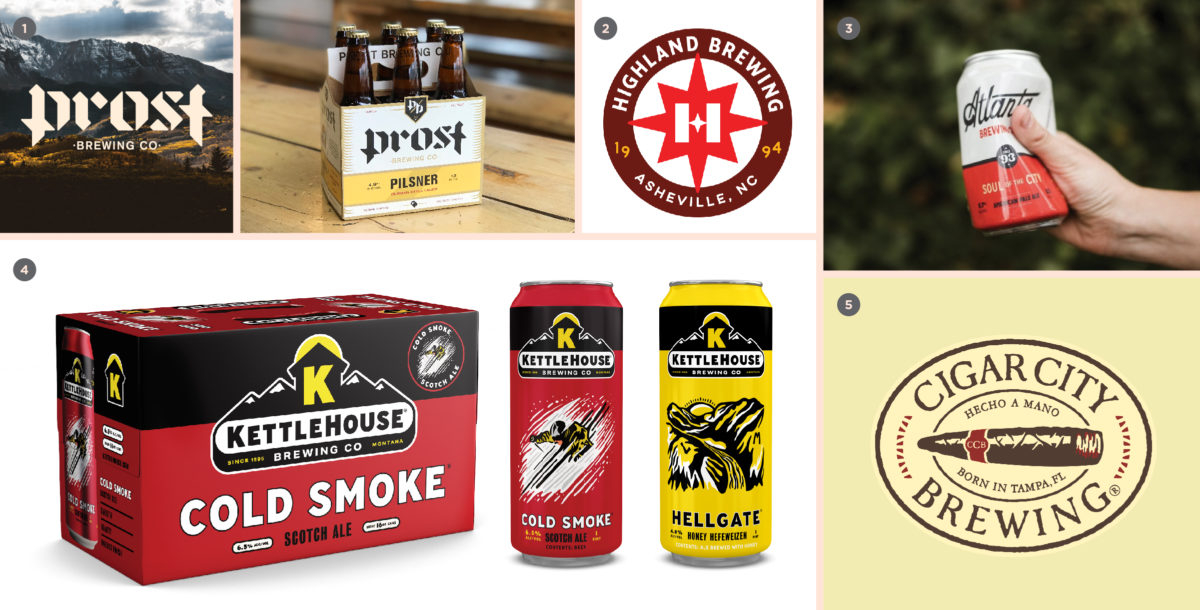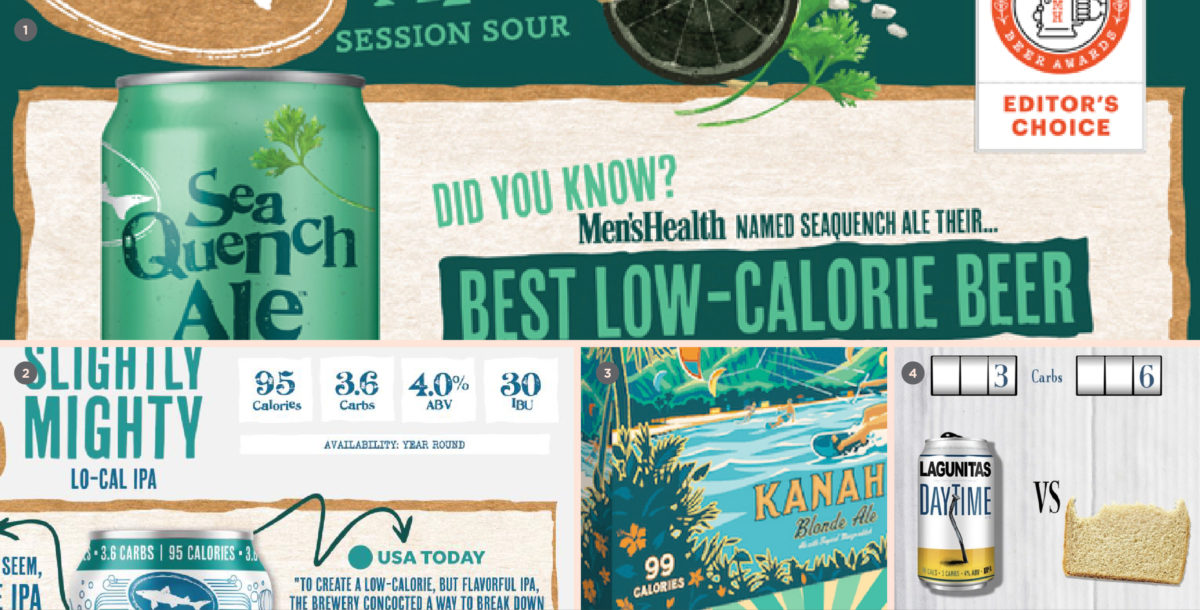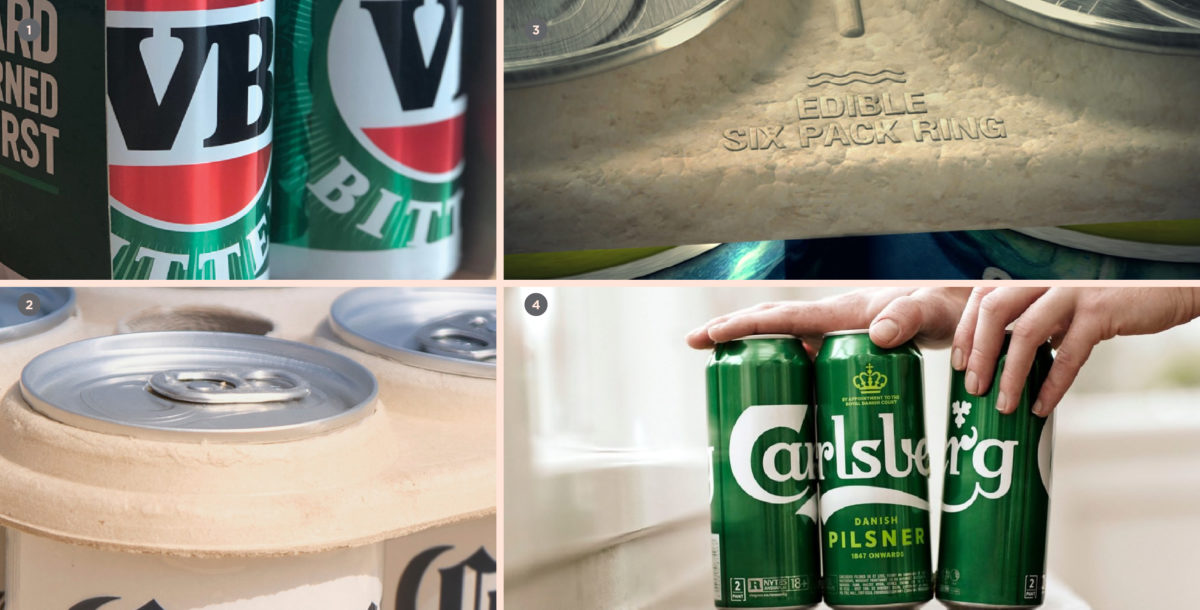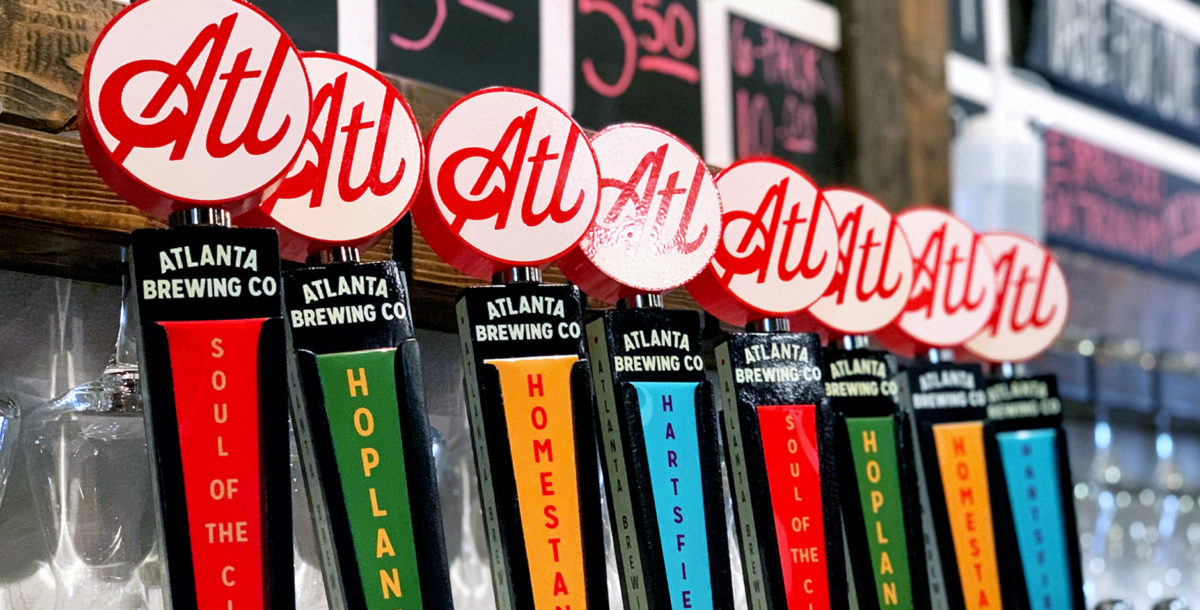This being said, we have noted several specific visual trends that are cool, beautiful, or otherwise interesting to look at. Beyond this analysis, there is important stuff happening just behind the aesthetic front. What are the machinations that are driving such continual, fast-paced change in the beer industry? How does this turnover effect visual styling, and what does this all mean for 2019? Perhaps most importantly of all, how might you apply these ideas to your own brewery’s storytelling?
Let’s begin by discussing a few of the visual trends we’ve seen rise in prominence this year.
MAXIMUM DESIGN, MINIMAL BRANDING
This is awesome! Wait, who made this again?
This colorful styling took root as a way to denote a brewery’s special releases by seeking to stand starkly apart from core flagship packaging. Originally, this created a one-off sense of “beer as art”—often signifying an extremely experimental beer, or a limited release that stands apart from business as usual. We are now noticing that smaller/younger breweries are applying this approach to their core/flagship offerings, for better and for worse.
Such an approach produces vibrant cans that leap off the shelf with incendiary full-scale patterning, vibrant color and few (if any) branding elements to clutter things up. But this abstraction cuts both ways: without careful implementation, customers are left with no idea who made the beer, or (perhaps more concerning) are easily wooed away by upstart competitors who will inevitably release similar style-driven packaging.




